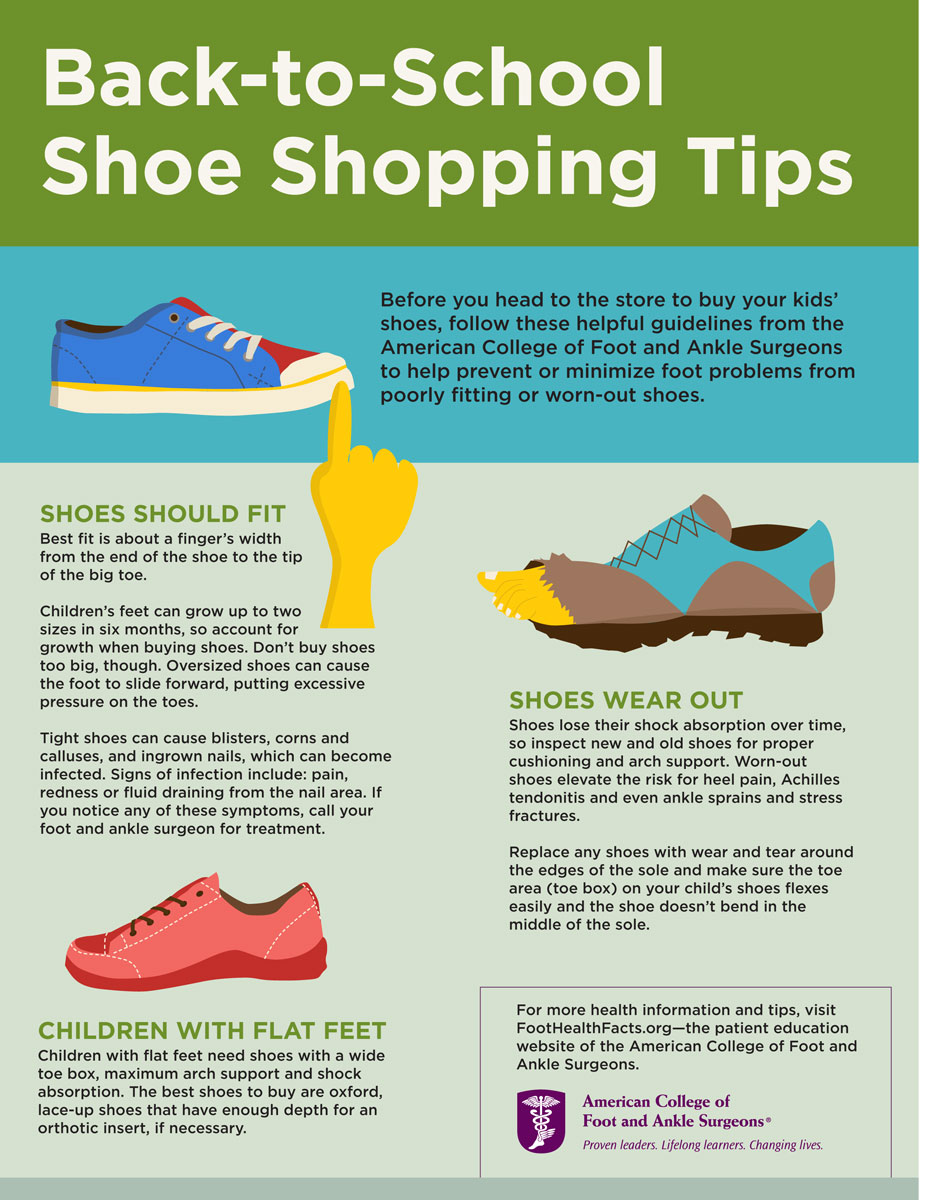Back-to-School Shoe Shopping Tips
Parents: Avoid Kids’ Foot Problems with the Right Shoes
The start of a new school year brings about two certainties: new clothes and new shoes. Unlike in years past, today’s shelves are stocked with a variety of shoe types that run the gamut in style and fit. As such, parents have much more to consider when shopping for back-to-school shoes.
To make things easier at the shoe store, the American College of Foot and Ankle Surgeons (ACFAS) offers helpful guidelines in a quick-reference infographic to help minimize foot problems caused by poorly fitting or worn out shoes.

Shoes Should Fit
Your child’s feet can grow up to two sizes in six months, so you need to account for growth when buying shoes. That does not mean you should buy shoes that are too big—oversized shoes cause the foot to slide forward, putting excessive pressure on the toes. Foot and ankle surgeons suggest a good fit is about a finger's width from the end of the shoe to the tip of the big toe.
Tight shoes can cause blisters, corns and calluses on your child’s toes, blisters on the back of the heels or worse, ingrown nails, which can become infected. Signs of infection from ingrown nails include pain, redness or fluid draining from the area. If you notice any of these symptoms, schedule an appointment with a foot and ankle surgeon, who can perform a simple, safe in-office procedure to remove the nail.
Shoes Wear Out
Shoes lose their shock absorption over time, so inspect new and old shoes for proper cushioning and arch support. Foot and ankle surgeons caution, worn-out shoes elevate the risk for heel pain, Achilles tendonitis and even ankle sprains and stress fractures. Replace any shoes with wear and tear around the edges of the sole. When buying shoes, check to see that the toe box flexes easily and the shoe does not bend in the middle of the sole.
Children with Flat Feet
Children with flat feet need shoes with a wide toe box, maximum arch support and shock absorption. The best shoes to buy are oxford, lace-up shoes that have enough depth for an orthotic insert, if necessary.